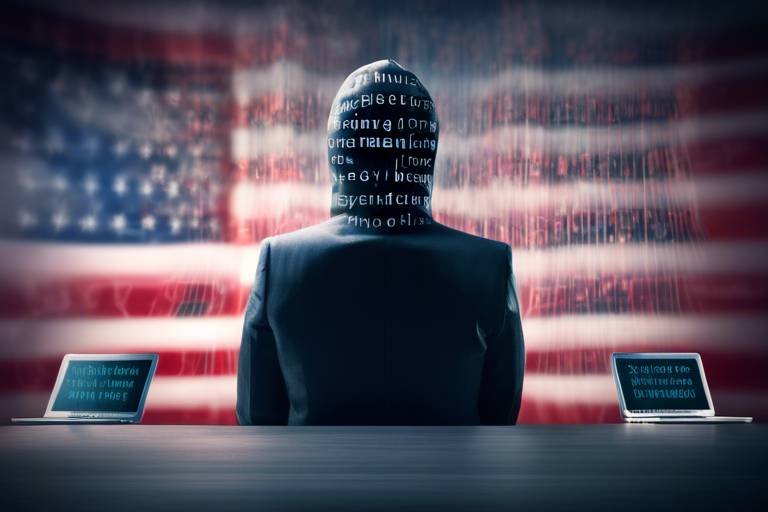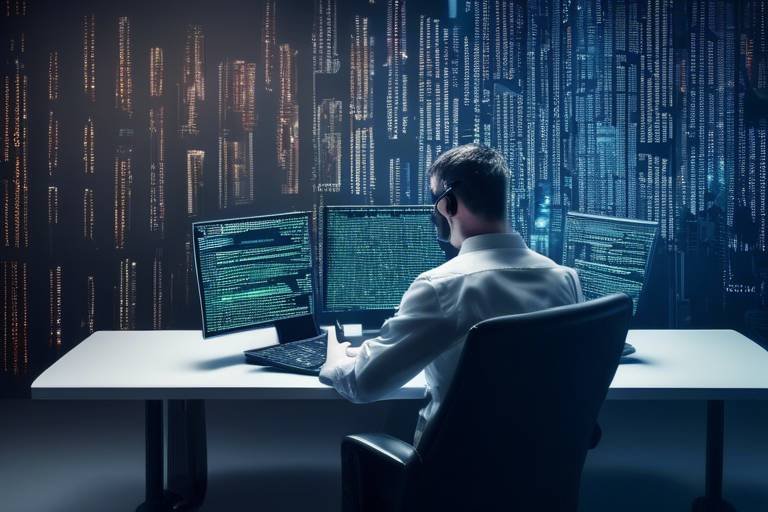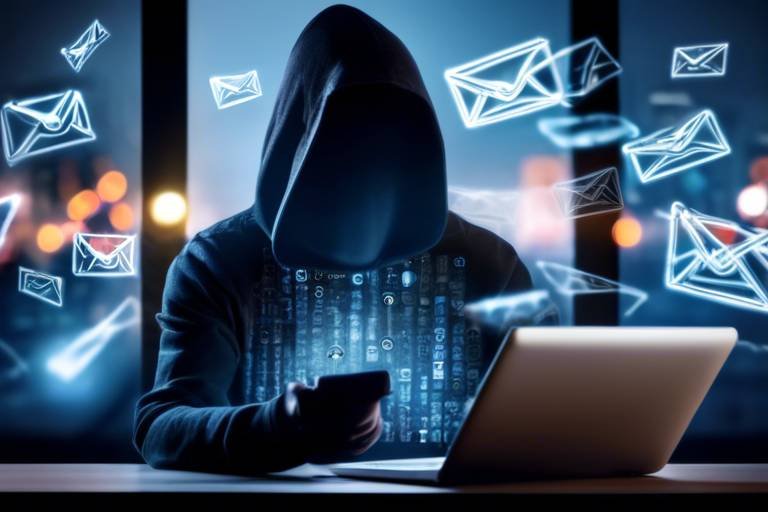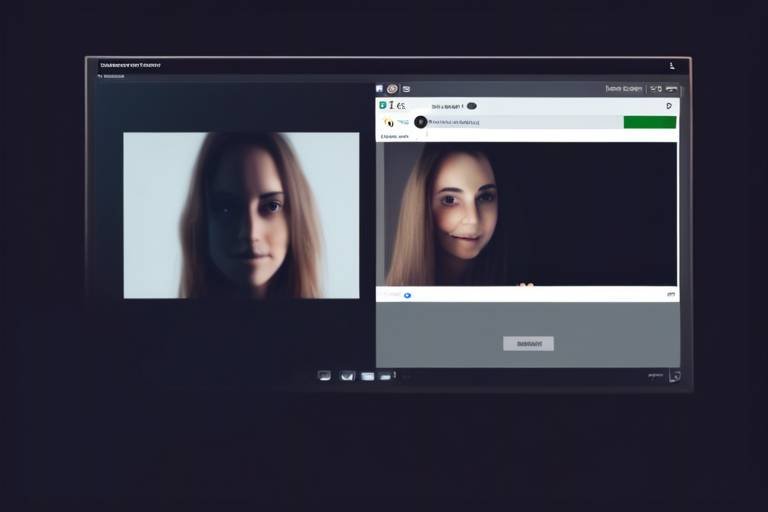Cybersecurity Issues in the Music Industry
The music industry is not just about melodies and rhythms; it’s also a vibrant ecosystem that relies heavily on digital technologies. As artists share their work on various platforms, they simultaneously expose themselves to a plethora of cybersecurity challenges. From data breaches that threaten the very core of their intellectual property to copyright infringement that undermines their hard work, the stakes have never been higher. In this article, we’ll dive deep into the cybersecurity issues plaguing the music industry, exploring the types of threats, notable breaches, and the essential measures that can be taken to protect artists and their creations.
As the music industry increasingly relies on digital platforms, cyber threats have surged, putting artists and organizations at risk. The rise of streaming services, digital downloads, and social media has transformed how we consume music, but it has also opened the door to a range of cyber threats. These threats can be categorized into several types:
- Phishing Attacks: Cybercriminals often impersonate legitimate entities to steal sensitive information from artists and their teams.
- Ransomware: This malicious software can lock access to essential files, demanding payment for their release.
- Intellectual Property Theft: Unauthorized copying and distribution of music can undermine an artist's revenue and reputation.
With these threats lurking in the shadows, it’s crucial for the music industry to stay vigilant and proactive in safeguarding their digital assets.
Data breaches can have devastating effects on music companies, leading to financial losses and reputational damage. When sensitive data is compromised, it doesn't just affect the company; it can also ripple through to artists, fans, and the entire industry. For instance, when a record label suffers a breach, not only could their financial data be exposed, but also personal information of artists, leading to potential identity theft and loss of trust.
Several high-profile data breaches have rocked the music industry, exposing sensitive information and causing chaos. One such incident involved a major streaming service that faced a significant breach, compromising millions of users' data. The repercussions were vast, ranging from legal battles to a sharp decline in user trust. Another notable case involved a well-known record label that found itself in hot water after hackers accessed confidential artist contracts and unreleased music. These incidents serve as stark reminders of the vulnerabilities that exist in our increasingly digital world.
Analyzing past breaches provides critical insights into improving cybersecurity practices. One key lesson is the importance of regular security audits. By continuously evaluating their security measures, companies can identify weaknesses before they are exploited. Additionally, fostering a culture of cybersecurity awareness among employees can significantly reduce risks. Training staff to recognize phishing attempts and secure sensitive information is essential for creating a robust defense against cyber threats.
Implementing robust security protocols is essential for safeguarding data. Music companies can adopt various strategies to mitigate breach risks, including:
- Multi-Factor Authentication: This adds an extra layer of security by requiring more than one form of verification before granting access.
- Data Encryption: Protecting sensitive data through encryption ensures that even if it is intercepted, it remains unreadable to unauthorized parties.
- Regular Software Updates: Keeping software up to date helps close security loopholes that hackers may exploit.
Copyright infringement remains a significant concern in the music industry, exacerbated by digital distribution. With the ease of sharing music online, unauthorized copies can spread like wildfire, robbing artists of their rightful earnings. Cybersecurity intersects with copyright protection in various ways, as secure platforms are needed to ensure that artists' works are not misused. This highlights the necessity for robust digital rights management (DRM) solutions that can help protect artists' intellectual property in the digital realm.
Adopting best practices is crucial for music industry stakeholders to enhance their cybersecurity posture. By implementing comprehensive strategies, music companies can safeguard their digital assets and maintain artist integrity. This includes investing in advanced technologies and fostering a culture of security awareness.
Educating employees about cybersecurity risks is vital for prevention. Training programs can help staff understand the importance of cybersecurity and how to recognize potential threats. Regular workshops and updates can keep security at the forefront of everyone's mind, making it a shared responsibility within the organization.
Leveraging technology can significantly bolster cybersecurity efforts. Music companies should explore various technological solutions available to enhance data protection and threat detection. This could include employing artificial intelligence for threat monitoring or utilizing blockchain for secure transactions and rights management.
1. What are the main cybersecurity threats in the music industry?
The main threats include phishing attacks, ransomware, and intellectual property theft.
2. How can music companies protect their data?
Implementing multi-factor authentication, data encryption, and regular software updates are key measures.
3. Why is employee training important for cybersecurity?
Employees are often the first line of defense against cyber threats, and training helps them recognize and respond to potential risks.

The Rise of Cyber Threats in Music
The music industry has undergone a seismic shift in recent years, with digital platforms becoming the lifeblood of how artists distribute and promote their work. However, this rapid digitalization has also opened the floodgates to a myriad of cyber threats. As more artists and record labels transition to online platforms, the risk of cyberattacks has escalated dramatically. Imagine a world where your favorite artist's unreleased album is leaked online due to a data breach—this is not just a nightmare scenario but a reality faced by many in the industry today.
Cyber threats in the music industry manifest in various forms, including but not limited to data breaches, phishing attacks, and malware infections. Each of these threats poses significant risks not only to the financial health of music companies but also to the integrity of the artists themselves. For instance, when a data breach occurs, sensitive information such as bank details, personal addresses, and unreleased content can be exposed, leading to potential identity theft and financial loss.
Moreover, the rise of streaming services has made it easier for cybercriminals to exploit vulnerabilities in digital distribution channels. They can launch attacks that disrupt services or steal intellectual property, which can have devastating repercussions. For example, a successful attack on a streaming platform could result in millions of dollars lost in revenue and a tarnished reputation that could take years to rebuild.
It's essential to recognize that these threats are not just abstract concepts; they have real-world implications. The following are some prevalent forms of cyber threats that the music industry faces today:
- Phishing Attacks: Cybercriminals often use deceptive emails or messages to trick individuals into revealing sensitive information.
- Ransomware: This malicious software can lock users out of their systems or files until a ransom is paid, crippling operations.
- Intellectual Property Theft: Unauthorized copying and distribution of music can erode an artist's income and brand value.
As we move forward, it’s clear that the music industry must take these cyber threats seriously. The stakes are high, and the consequences of inaction can be catastrophic. By understanding the landscape of cyber threats, artists and music companies can better prepare themselves and implement the necessary measures to protect their valuable intellectual property and personal data. After all, in a world that is increasingly digital, the need for robust cybersecurity is not just an option; it’s a necessity.

Data Breaches and Their Impact
In today's hyper-connected world, the music industry has become a prime target for cybercriminals. Data breaches can wreak havoc on music companies, leading to not just financial losses but also significant reputational damage. Imagine waking up to find that sensitive information about your favorite artist has been leaked online. The trust that fans place in their idols can be shattered in an instant. This is the reality that many music companies face when their data is compromised.
Data breaches can take many forms, from unauthorized access to sensitive information to the theft of intellectual property. When hackers infiltrate a music company's database, they can steal not only personal data but also unreleased tracks, contracts, and other proprietary information. The fallout from these breaches can be extensive, affecting not only the company involved but also artists, fans, and the industry as a whole.
For instance, a notable breach occurred when a major record label suffered a cyberattack that exposed the personal information of thousands of artists and employees. This incident not only led to financial losses due to legal fees and remediation efforts but also resulted in a loss of trust from artists who felt vulnerable and unprotected. The implications of such breaches can extend far beyond immediate financial concerns; they can also hinder an artist's ability to negotiate contracts and secure new deals.
To illustrate the impact of data breaches, consider the following table that highlights some of the most significant breaches in the music industry:
| Year | Company | Type of Data Compromised | Impact |
|---|---|---|---|
| 2020 | Major Record Label | Artist Personal Information | Loss of trust, legal ramifications |
| 2019 | Streaming Service | Customer Data | Financial losses, customer churn |
| 2021 | Music Distribution Platform | Unreleased Tracks | Loss of intellectual property, revenue decline |
The repercussions of data breaches are not just limited to immediate financial losses. The long-term effects can be equally damaging. For example, a breach can lead to increased scrutiny from regulators, resulting in fines and stricter compliance requirements. Additionally, companies may find it challenging to secure partnerships or collaborations after a breach, as potential partners may perceive them as a security risk. This creates a vicious cycle where the company struggles to regain its footing in a competitive industry.
Moreover, the emotional toll on artists cannot be overlooked. Many artists invest their lives into their music, and when their work is compromised, it can feel like a personal attack. The fear of having their unreleased work stolen or their personal information exposed can stifle creativity and hinder their ability to perform. This is why it is crucial for music companies to take proactive measures to protect their data and, by extension, their artists.
In summary, the impact of data breaches in the music industry is profound and multifaceted. From financial losses to reputational damage and emotional distress for artists, the consequences are far-reaching. As cyber threats continue to evolve, the music industry must remain vigilant and proactive in its approach to cybersecurity.
- What is a data breach? A data breach occurs when unauthorized individuals gain access to sensitive information, such as personal data or intellectual property.
- How can music companies prevent data breaches? Companies can implement robust security measures, such as encryption, regular security audits, and employee training programs.
- What should artists do if their data is compromised? Artists should immediately notify their management and take steps to secure their personal information, such as changing passwords and monitoring accounts for suspicious activity.

High-Profile Cases of Data Breaches
The music industry has not been immune to the growing threat of data breaches, with several high-profile cases making headlines in recent years. These incidents have not only exposed sensitive information but have also raised questions about the security measures in place within major music companies. One of the most notable breaches occurred in 2019 when a well-known streaming service experienced a significant data leak, compromising the personal information of millions of users. This breach highlighted the vulnerabilities of digital platforms that are often taken for granted.
Another alarming case involved a major record label that fell victim to a ransomware attack. Cybercriminals infiltrated their systems, encrypting critical data and demanding a hefty ransom for its release. The repercussions were severe, leading to disrupted operations and a loss of trust among artists and stakeholders. Such incidents serve as a stark reminder that even the biggest players in the industry are not immune to cyber threats.
In addition to these breaches, there have been instances of unauthorized access to artists' unreleased music. For example, a prominent artist had their upcoming album leaked online due to a security flaw in the file-sharing system used by their management team. This not only resulted in financial losses but also tarnished the artist's reputation, as fans were exposed to unfinished work that did not reflect their true artistic vision.
To illustrate the impact of these breaches, consider the following table that summarizes key incidents in the music industry:
| Incident | Year | Type of Breach | Impact |
|---|---|---|---|
| Streaming Service Data Leak | 2019 | User Data Exposure | Millions of users affected, loss of trust |
| Record Label Ransomware Attack | 2020 | Ransomware | Disrupted operations, financial losses |
| Artist Album Leak | 2021 | Unauthorized Access | Reputation damage, financial impact |
These high-profile cases underscore the urgent need for enhanced cybersecurity measures within the music industry. As digital platforms continue to evolve, so too must the strategies employed to protect sensitive data. The lessons learned from these breaches can serve as a roadmap for improving security protocols, ensuring that artists and their intellectual property are safeguarded against future threats.
In conclusion, the music industry must take these incidents seriously, not only to protect their assets but also to maintain the trust of their artists and fans. Cybersecurity is no longer just an IT issue; it has become a fundamental aspect of doing business in the digital age.
- What are the common types of data breaches in the music industry? Data breaches can include unauthorized access to user data, ransomware attacks, and leaks of unreleased music.
- How can music companies protect themselves from data breaches? Implementing robust security protocols, investing in technology solutions, and educating employees about cybersecurity risks are essential steps.
- What impact do data breaches have on artists? Data breaches can lead to financial losses, reputational damage, and a loss of trust among fans and stakeholders.

Lessons Learned from Data Breaches
When it comes to the music industry, the lessons learned from data breaches are not just a series of unfortunate events; they are wake-up calls that resonate deeply within the community. Each breach is a stark reminder that even the most celebrated artists and reputable companies are not immune to cyber threats. So, what can we learn from these incidents? Let’s dive into some key takeaways that can help fortify the industry's defenses.
First and foremost, the importance of proactive measures cannot be overstated. Many breaches occur due to a lack of foresight and preparation. Music companies must prioritize cybersecurity by investing in robust systems and protocols before a breach happens, rather than scrambling to react after the fact. This proactive mindset can save not only financial resources but also the invaluable trust of fans and stakeholders.
Another critical lesson is the need for comprehensive risk assessments. Regularly evaluating potential vulnerabilities and threats is essential. By identifying weak points in their security frameworks, organizations can implement targeted strategies to address these issues. For example, a music streaming service might discover that third-party integrations are a weak link and can then take steps to secure these connections.
Furthermore, the aftermath of a data breach often reveals the necessity for clear communication strategies. Artists and companies should have a plan in place for informing affected parties. Transparency is key; when a breach occurs, stakeholders appreciate being kept in the loop about what happened, what data may have been compromised, and how the company intends to rectify the situation. This approach not only helps maintain trust but also can mitigate reputational damage.
Finally, the significance of continuous education and training cannot be ignored. Cybersecurity is not a one-time effort but an ongoing process. Employees at all levels must be educated about the latest threats and best practices. Regular training sessions can empower staff to recognize phishing attempts, suspicious activities, and other potential security risks. When everyone in the organization is aware of their role in maintaining cybersecurity, the collective defense becomes much stronger.
In conclusion, the lessons learned from data breaches in the music industry serve as a blueprint for better practices moving forward. By adopting a proactive approach, conducting thorough risk assessments, communicating transparently, and fostering a culture of continuous education, the music industry can significantly enhance its cybersecurity posture and protect its artists and their intellectual property.
- What are the most common types of cyber threats in the music industry? The most common threats include data breaches, phishing attacks, and copyright infringement.
- How can music companies protect themselves from data breaches? Companies can implement strong security protocols, conduct regular risk assessments, and train employees on cybersecurity best practices.
- What should an artist do if their data is compromised? Artists should immediately inform their management and legal teams, assess the extent of the breach, and communicate transparently with their fans and stakeholders.

Preventative Measures Against Breaches
In an era where cyber threats loom large, the music industry must adopt preventative measures to shield itself from data breaches. The first line of defense is to implement robust security protocols. This includes using strong, unique passwords for all accounts and requiring two-factor authentication (2FA) wherever possible. Think of your passwords as the keys to your digital kingdom; if they’re weak, you’re inviting trouble right through the front door.
Another essential strategy is to conduct regular security audits. These audits help identify vulnerabilities in your systems before they can be exploited. Imagine walking through your house with a flashlight, checking for any weak points or open windows. By doing this in the digital realm, music companies can proactively address issues that could lead to a breach.
Moreover, investing in advanced encryption technologies is crucial. Encryption acts like a secret language that only authorized users can understand, ensuring that even if data is intercepted, it remains unintelligible to outsiders. This is particularly vital for protecting sensitive information such as contracts, financial data, and personal details of artists and employees.
Additionally, establishing a comprehensive incident response plan is key. This plan should outline steps to take in the event of a data breach, including how to communicate with affected parties and regulatory bodies. Think of it as having a fire drill; knowing what to do in advance can significantly reduce panic and confusion when a real incident occurs.
Finally, fostering a culture of cybersecurity awareness within the organization is paramount. This can be achieved through regular training sessions that educate employees about the latest threats and safe practices. When everyone in the organization understands their role in maintaining security, it creates a united front against potential breaches. In this way, cybersecurity becomes a shared responsibility, much like a team working together to win a game.
- What are the most common types of cyber threats in the music industry?
Common threats include phishing attacks, ransomware, and data breaches, which can severely disrupt operations and compromise sensitive information. - How often should we conduct security audits?
It’s advisable to conduct security audits at least once a year, but more frequent assessments may be necessary depending on the size and complexity of your organization. - What role does employee training play in cybersecurity?
Employee training is crucial as it equips staff with the knowledge to recognize and respond to potential threats, effectively reducing the risk of human error leading to security breaches.

The Role of Copyright Infringement
Copyright infringement is like a double-edged sword in the music industry; it can either cut down artists' careers or propel them into the spotlight, depending on how it's handled. In today's digital age, where music is streamed, shared, and downloaded with just a click, the lines between legal use and infringement have become increasingly blurred. Artists pour their hearts and souls into their creations, yet the ease of digital distribution opens the floodgates for unauthorized use of their work. This not only threatens the financial stability of artists but also undermines the value of their intellectual property.
The impact of copyright infringement is profound. For instance, when someone illegally downloads a song, the artist loses out on potential revenue. This can be particularly devastating for independent musicians who rely on sales and streaming royalties to sustain their careers. Moreover, the rise of platforms that facilitate sharing and remixing has made it challenging to enforce copyright laws effectively. Artists often find themselves in a constant battle to protect their work, which can be both exhausting and costly.
Additionally, the intersection of cybersecurity and copyright protection is becoming increasingly relevant. Cyber threats such as hacking and phishing can lead to unauthorized access to an artist's work, making it easier for infringers to exploit their creations. To combat this, many music companies are now investing in cybersecurity measures that not only protect their data but also help enforce copyright laws. For example, digital rights management (DRM) technologies are being employed to restrict unauthorized copying and distribution of music. While these measures can be effective, they are not foolproof and must be constantly updated to keep up with evolving cyber threats.
In essence, the role of copyright infringement in the music industry is a complex issue that intertwines with cybersecurity. As artists navigate this digital landscape, they must be vigilant in protecting their rights while also adapting to new technologies that can both help and hinder their efforts. The balance between sharing music and safeguarding intellectual property is delicate, yet crucial for the sustainability of the industry.
- What is copyright infringement?
Copyright infringement occurs when someone uses a copyrighted work without permission from the owner, violating their exclusive rights.
- How does copyright infringement affect artists?
It can lead to significant financial losses and undermine the value of their work, affecting their ability to earn a living.
- What measures can artists take to protect their work?
Artists can register their works with copyright offices, use digital rights management (DRM) technologies, and monitor online platforms for unauthorized use.
- What role does cybersecurity play in copyright protection?
Cybersecurity measures help prevent unauthorized access to an artist's work, thus reducing the risk of copyright infringement.

Best Practices for Cybersecurity
In the fast-paced world of the music industry, protecting digital assets is not just a luxury; it's a necessity. With the increasing reliance on digital platforms for distribution, promotion, and collaboration, ensuring robust cybersecurity measures is crucial. So, what can music companies do to safeguard their data and maintain the integrity of their artists? Here are some best practices that can make a significant difference.
First and foremost, employee training is vital. Many cybersecurity breaches occur due to human error, whether it's clicking on a phishing email or using weak passwords. By implementing comprehensive training programs, organizations can educate their staff about the various threats they might encounter. This training should cover topics such as identifying suspicious emails, understanding the importance of strong passwords, and the significance of regularly updating software. A well-informed employee is the first line of defense against cyber threats.
Next, investing in technology solutions can significantly enhance cybersecurity efforts. This includes utilizing firewalls, antivirus software, and intrusion detection systems. However, technology alone isn't sufficient. It must be coupled with proper implementation and regular updates to stay ahead of cybercriminals. For instance, using encryption for sensitive data ensures that even if hackers manage to breach systems, the information remains unreadable.
Moreover, establishing incident response plans is essential. These plans outline the steps to take in case of a data breach or cyber attack. Having a clear response strategy minimizes the impact of an incident and ensures that the organization can recover quickly. Regularly testing these plans through drills can help identify any weaknesses and improve the overall response time.
Additionally, organizations should consider conducting regular security audits. These audits help identify vulnerabilities within the system that could be exploited by hackers. By assessing the current security posture, music companies can implement necessary changes to strengthen their defenses. A proactive approach in identifying and addressing security gaps is far more effective than a reactive one.
Finally, establishing a culture of security awareness within the organization is paramount. This means that everyone, from the CEO to the interns, should prioritize cybersecurity in their daily operations. Encouraging open discussions about security issues and sharing information about the latest threats can foster a collective responsibility towards safeguarding the company’s digital assets.
| Best Practices | Description |
|---|---|
| Employee Training | Educating staff about cybersecurity threats and safe practices. |
| Technology Solutions | Utilizing firewalls, antivirus software, and encryption. |
| Incident Response Plans | Outlining steps to take in case of a data breach. |
| Security Audits | Regular assessments to identify vulnerabilities. |
| Culture of Security Awareness | Encouraging all employees to prioritize cybersecurity. |
By implementing these best practices, the music industry can significantly reduce its vulnerability to cyber threats. Remember, in a world where digital assets are the new gold, safeguarding them is not just a responsibility; it's an essential part of ensuring the longevity and success of artists and their work.
- What are the most common cyber threats in the music industry? Common threats include phishing attacks, ransomware, and data breaches targeting sensitive artist information.
- How can small music companies protect themselves? Small companies can utilize affordable cybersecurity tools, conduct regular training, and stay informed about the latest threats.
- Is it necessary to have a dedicated IT team for cybersecurity? While it's beneficial, smaller organizations can outsource cybersecurity tasks or use managed service providers to ensure they have adequate protection.
- What should I do if I suspect a data breach? Immediately follow your incident response plan, notify relevant stakeholders, and consult with cybersecurity professionals to mitigate the damage.

Training and Awareness Programs
In the fast-paced world of the music industry, where creativity meets technology, cybersecurity often takes a backseat. However, as we dive deeper into the digital age, it becomes increasingly clear that prioritizing is not just a good idea—it's essential. These programs are designed to equip employees with the knowledge and skills they need to recognize and respond to potential cyber threats. Think of it as giving them a shield against the invisible dangers lurking in the digital realm.
Imagine a scenario where an employee receives an email that appears to be from a trusted source, but is actually a phishing attempt. Without proper training, they might click on a malicious link, unwittingly compromising sensitive data. By implementing comprehensive training programs, organizations can significantly reduce the risk of such incidents. These programs should cover a variety of topics, including:
- Identifying phishing attempts and suspicious emails
- Understanding the importance of strong passwords
- Recognizing the signs of malware and ransomware
- Best practices for data handling and sharing
Moreover, awareness programs should not be a one-time event. Just like a musician practices their craft regularly, employees need ongoing training to stay updated on the latest threats and security measures. Regular workshops, online courses, and even gamified training sessions can keep the information fresh and engaging. It's about creating a culture of security where everyone feels responsible for protecting the organization’s digital assets.
To illustrate the effectiveness of these programs, consider the following table that outlines the impact of training on cybersecurity incidents:
| Year | Incidents Before Training | Incidents After Training | Percentage Decrease |
|---|---|---|---|
| 2020 | 50 | 20 | 60% |
| 2021 | 40 | 15 | 62.5% |
| 2022 | 30 | 10 | 66.67% |
This data clearly shows that organizations that invest in training and awareness see a significant decline in cybersecurity incidents. By fostering a proactive approach to cybersecurity, the music industry can protect its artists, their intellectual property, and the entire ecosystem that supports them. Ultimately, the goal is to create an environment where everyone—from artists to administrative staff—understands their role in maintaining a secure digital landscape.
In conclusion, implementing training and awareness programs is not just about compliance; it's about empowering individuals and creating a resilient community within the music industry. As the threats evolve, so too must our strategies for combating them. By investing in human resources and fostering a culture of awareness, the music industry can not only safeguard its assets but also enhance its overall creativity and innovation.
- What are the main goals of cybersecurity training programs? The primary goals are to educate employees about potential threats, improve their ability to identify suspicious activities, and foster a culture of security awareness.
- How often should training be conducted? Regular training sessions should be held at least once a year, with refresher courses or updates provided quarterly to keep everyone informed about the latest threats.
- Can training programs be tailored to specific roles? Absolutely! Tailoring training to specific roles ensures that employees receive relevant information that directly pertains to their responsibilities and potential risks.

Investing in Technology Solutions
In today's fast-paced digital landscape, the music industry is increasingly vulnerable to various cyber threats. As artists and organizations strive to protect their creative works and sensitive data, investing in technology solutions has become not just a choice but a necessity. The right technology can act as a formidable shield against cyberattacks, ensuring that the integrity of artists' intellectual property is maintained. But what does investing in technology solutions really entail for the music industry?
First and foremost, it involves implementing robust security systems that can detect and respond to threats in real-time. This means not only having firewalls and antivirus software but also utilizing advanced technologies like artificial intelligence (AI) and machine learning (ML) to predict and prevent potential breaches. These technologies can analyze patterns in data access and usage, identifying anomalies that may indicate a security threat. For example, if a musician's unreleased tracks suddenly become accessible to unauthorized users, AI can flag this unusual behavior immediately, allowing for swift action.
Moreover, investing in cloud security solutions is essential. With many artists and labels storing their music and sensitive information on cloud platforms, ensuring that these platforms are secure is crucial. Cloud security services provide encryption, secure access controls, and regular security audits, which can significantly reduce the risk of data breaches. Additionally, the use of multi-factor authentication (MFA) adds an extra layer of protection, making it much harder for cybercriminals to gain access to sensitive information.
Another critical aspect of technology investment is data backup and recovery solutions. In the event of a cyberattack, having a reliable backup system ensures that artists do not lose their valuable work. Regularly scheduled backups can save not just time but also the emotional toll associated with losing hard-earned creations. Music companies should consider implementing automated backup solutions that securely store data off-site, making recovery straightforward and efficient.
Furthermore, organizations should also focus on investing in cybersecurity training programs for their employees. Technology solutions are only as effective as the people using them. By fostering a culture of security awareness, employees can better recognize phishing attempts and other social engineering tactics that cybercriminals often employ. Regular training sessions can empower staff to be the first line of defense in protecting sensitive information.
Finally, it's essential to stay updated with the latest cybersecurity trends and threats. The cyber landscape is constantly evolving, and what worked yesterday might not work today. By investing in continuous education and the latest technology solutions, music industry stakeholders can stay one step ahead of potential threats, ensuring that their creative works are safe and secure.
In summary, investing in technology solutions goes beyond merely purchasing software; it is about creating a comprehensive strategy that encompasses security systems, cloud protection, data recovery, employee training, and staying informed about emerging threats. In a world where cyber threats are becoming increasingly sophisticated, the music industry must prioritize these investments to safeguard its future.
- What are the most common cybersecurity threats faced by the music industry?
Common threats include data breaches, ransomware attacks, and phishing scams targeting artists and music companies. - How can artists protect their intellectual property online?
Artists can protect their work by using copyright registration, digital rights management (DRM) tools, and robust security measures on their platforms. - What role does employee training play in cybersecurity?
Employee training helps staff recognize potential threats and respond appropriately, making them a crucial part of the cybersecurity strategy. - Are cloud storage solutions safe for storing music data?
Yes, when using reputable providers with strong security measures, cloud storage can be a safe option for storing music data.
Frequently Asked Questions
- What are the main cybersecurity threats facing the music industry?
The music industry is increasingly vulnerable to various cybersecurity threats, including data breaches, ransomware attacks, and phishing scams. As more artists and companies rely on digital platforms for distribution and promotion, the risk of cyber threats has surged. These threats can lead to unauthorized access to sensitive information, financial losses, and damage to reputations.
- How do data breaches affect music companies and artists?
Data breaches can have a devastating impact on music companies and artists alike. For companies, breaches can result in significant financial losses due to legal fees, fines, and loss of business. For artists, the exposure of personal information, unreleased music, and sensitive contracts can lead to reputational harm and potential loss of income. The ripple effects can be felt throughout the entire industry.
- What lessons can be learned from past data breaches?
Analyzing past data breaches offers valuable insights into improving cybersecurity practices. Key lessons include the necessity of implementing strong password policies, regular security audits, and employee training programs. Companies should also invest in advanced security technologies to detect and respond to threats more effectively, ensuring that they remain a step ahead of cybercriminals.
- What preventative measures can music companies take against data breaches?
To safeguard against data breaches, music companies should adopt a multi-layered security approach. This includes using encryption for sensitive data, implementing strong access controls, and regularly updating software and systems. Additionally, conducting vulnerability assessments and fostering a culture of cybersecurity awareness among employees can significantly reduce the risk of breaches.
- How does copyright infringement relate to cybersecurity?
Copyright infringement is a major issue in the music industry, and it is often exacerbated by digital distribution channels. Cybersecurity plays a crucial role in protecting intellectual property by preventing unauthorized access and distribution of copyrighted material. Effective cybersecurity measures help ensure that artists’ work is not misused or stolen, thus safeguarding their rights and income.
- What are the best practices for enhancing cybersecurity in the music industry?
Best practices for enhancing cybersecurity in the music industry include adopting a proactive approach to security, investing in the latest technology solutions, and providing ongoing training for employees. Regularly updating security protocols, conducting risk assessments, and promoting a culture of awareness are essential steps to protect digital assets and maintain the integrity of artists.
- Why is employee training important for cybersecurity?
Employee training is vital for cybersecurity because human error is often the weakest link in security protocols. By educating staff about potential threats and best practices, music companies can create a more security-conscious environment. Training programs can help employees recognize phishing attempts, understand the importance of data protection, and follow security protocols effectively.
- What technology solutions can help improve cybersecurity in the music industry?
Various technology solutions can enhance cybersecurity in the music industry, including firewalls, intrusion detection systems, and data encryption tools. Additionally, using secure file-sharing platforms and implementing multi-factor authentication can help protect sensitive information. Investing in cybersecurity software that provides real-time threat detection and response capabilities is also crucial for safeguarding digital assets.



















